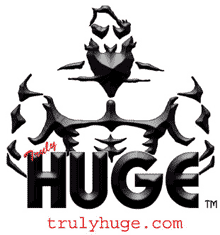
Click Here for Free Bodybuilding and Fitness Magazine Subscription

How To Be A Good Spotter
Posted by: Paul
1. Knowing How To Spot:
Successful weight
training / bodybuilding at advanced levels is a combination of many
essential factors. One of these essential factors is your ability
to spot properly when required.
Spotting may sound like a very easy thing to do, but trust me,
nearly all the people that I have met can't do it properly. Spotting
isn't about you piling the weight on the bar and then having your
training partner ending up deadlifting the bar and wrecking his
/ her back in the process just to satisfy your ego. No, spotting
is about you grinding out a few more reps so that your training
partner who is spotting you is only helping to lift the bar where
needed. Knowing just how much effort to apply to the bar requires
good communication, rather than pure guess work on the part of the
spotter who often ends up helping too much, or too little, rendering
the set useless. Once this happens the whole effectiveness of the
entire training on that body part is significantly reduced.
To avoid this happening you need to establish good lines of communication
with your training partner. This should consist of as few words
as possible so that your training partner who is performing the
set can focus all of his / her energy on the lift. I use the following
4 simple words when I spot people. These are:
• More - meaning that the spotter needs
to help a bit more.
• Less - meaning that the spotter needs
to help less.
• It's Gone - meaning that your training partner
is in trouble and that the set is over. At this point you should immediately,
and without question put the bar back onto the rack as quickly as
possible. You should not think that a bit of motivation on your part
will help your training partner in any way. When someone say's it's
gone, then it's gone.
These few words will ensure that you maximise the last few sets
as much as possible, whilst ensuring that you exactly know when
your training partner is in trouble so as to limit the risk of injury
as much as possible.
2. Knowing When To Spot:
It is essential
to have built up a good relationship with your training partner so
that they will know when you have absolutely nothing left to give,
and when you are able to grind out one or two more Forced Reps. When
someone has nothing left the rep completely grinds to a halt and the
weight will actually start to go back down, and so the spotter ends
up doing all the work and as a result this will greatly increase the
risk of injury on both sides. When this is the case it is much safer
to immediately end the rep, rather than risking continuing as you
may not even have the strength to grip the weight properly, or keep
the weight in the right plane of movement. As always it is a case
of safety first.
When there is more you will be able to keep the weight moving throughout
most of the movement and will only require your training partner
to give a very slight helping hand.
Click Here for a Chance to Win Free Bodybuilding Supplements
[Powerlifting Forum] [Bodybuilding Discussion Forum] [Bodybuilder Forum] [Teen Bodybuilding Forum]
[Muscle Growth Forum] [Weight Loss Forum] [Workout Forum] [Health and Fitness Forum]


